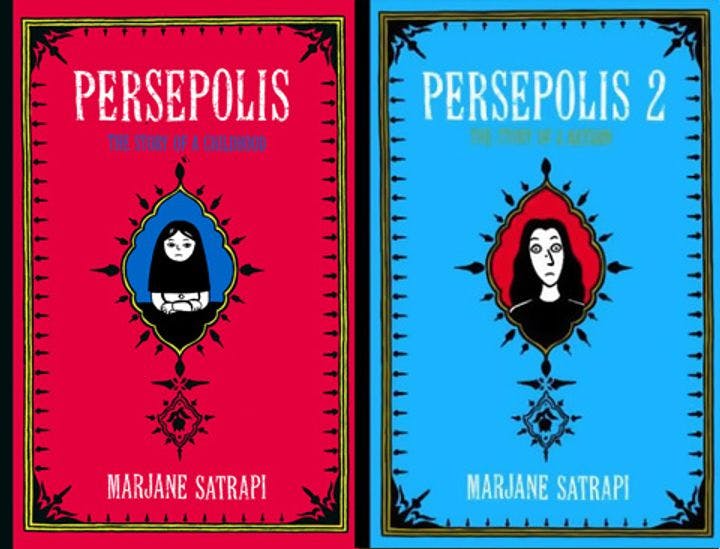Fall 2007
Drawing an Audience
– Ken Chen
Ken Chen on graphic novels.
Comics lost most boyish readers to video games and MTV decades ago. Since then, the audience for comics has consisted primarily of college-to-middle-aged males interested in tales about grown men punching each other. But that readership is broadening to include women, children, and other Johnny-comelately fans, thanks to a wave of movie adaptations (Sin City, Ghost World) and award-winning books (Persepolis, Fun Home). These readers are less interested in Snoopy than in psychologically realistic stories, and are less captivated by episodic superhero yarns than by book-length literary comics—graphic novels.
To find its bearings, this new audience may seek a critic’s handholding and a greatest-hits anthology, available, respectively, in Douglas Wolk’s essays and Ivan Brunetti’s collection of American alternative comics. Alternative comics, a comic-book genre roughly analogous to independent films, have been gaining popularity since Art Spiegelman published the first volume of Maus in 1986. A memoir about how Spiegelman’s father survived Auschwitz, Maus showed that comic books could handle weighty themes as well as literature could.
Great comics—such as Maus, which depicts the Jews as mice and the Germans as cats—can wake us from the way we habitually see the world. This is because the artist’s style itself can suggest an entire worldview. Frank Miller, on whose work the movies Sin City and 300 are based, produces slats of rain that are, in Wolk’s description, “cruel, freezing splinters of ink and light.” Chester Brown, author of the blackly humorous series Ed the Happy Clown, draws with “a poker-faced, almost ascetic approach, with the tone of an eccentric but very patient explanation.”
While a work of literary fiction may succeed by executing certain conventions beautifully, the thrills comic books offer derive from their curious imperfections. Wolk, a music writer, presents comics as kitsch pop-cultural products. His book, part history and part commentary, sometimes reads less like a critical treatise than like anthropological field notes from a comic-book convention. He frequently comes off as a fan rather than a critic, but he does provide a kind of surrogate adolescence spent in dank shops stocked with trading cards of naked warrior-princesses and coffin-like boxes of X-Men back issues.
To enjoy reading comics, Wolk suggests, you must appreciate the medium’s offensive surprises, flagrant silliness, bad exclamatory writing, and burps of onomatopoeia. His collection includes discussions of comic-book authors such as Grant Morrison, a psychedelic genius who has claimed that aliens abducted him in Kathmandu. Similarly, cartoonist Brunetti’s anthology includes many countercultural artists whose aesthetic resembles that of his own main work, a misanthropic comics series called Schizo that depicts the author stabbing himself in the eye and beheading and raping the planet Earth.
The last half of Brunetti’s book, however, includes artists of a more literary bent, such as Daniel Clowes and Chris Ware. This gives the collection as a whole the feel of a bildungsroman, gradually increasing in maturity and sophistication as it moves toward the end.
What if this sophistication represents a threat to the genre rather than a natural evolution? Because comics traditionally have been a pulp medium, they've been able to portray the world with a liberating strangeness, unconstrained by taste or codified literary standards. The effort to reach a mainstream audience may accomplish what no supervillain ever could: It may gentrify the comic book.
Take, as an example, Alison Bechdel’s Fun Home, a graphic novelmemoir recounting the author’s relationship with her father, a closeted gay man. The New York Times named it a notable book of 2006. The tale, which is not dissimilar from a heavy-handed New Yorker short story, caters to the taste of readers who wouldn't otherwise like comics. While great comic artists, like great painters and filmmakers, enrich their medium with a paradigmatic visual style, Bechdel’s stiff illustrations merely reiterate the text. It’s a comic book with closed-captioning. Brunetti’s anthology, in contrast, shows how visually sophisticated the strangest American comics can be.
* * *
Reviewed: "Reading Comics: How Graphic Novels Work and What They Mean" by Douglas Wolf, Da Capo, 2007. "An Anthology of Graphic Fiction, Cartoons, and True Stories" Edited by Ivan Brunetti, Yale University Press, 2007.
Photo courtesy of Wikipedia
Up next in this issue
